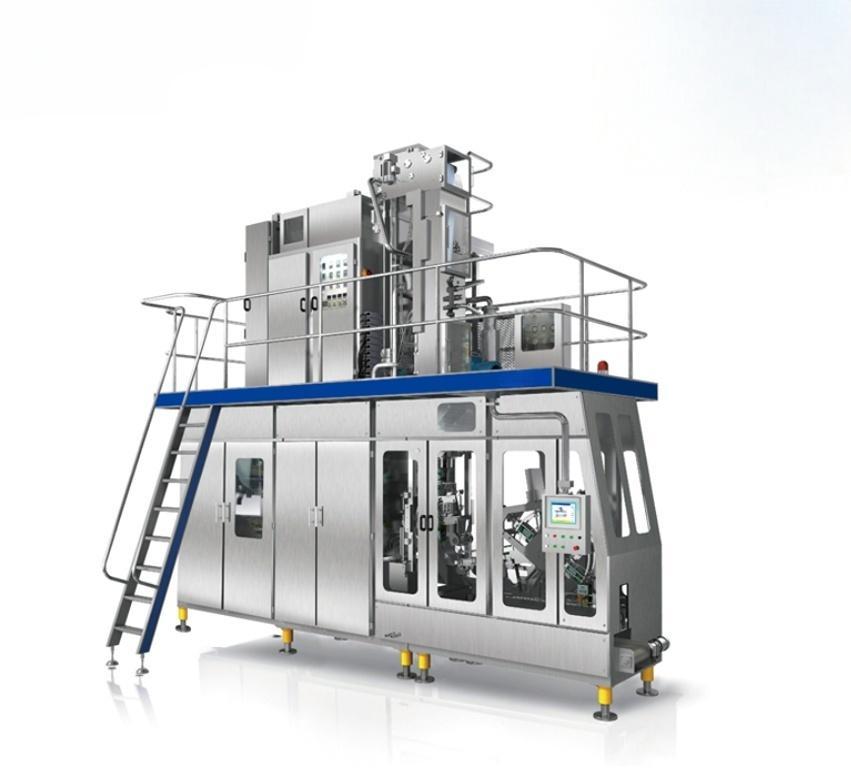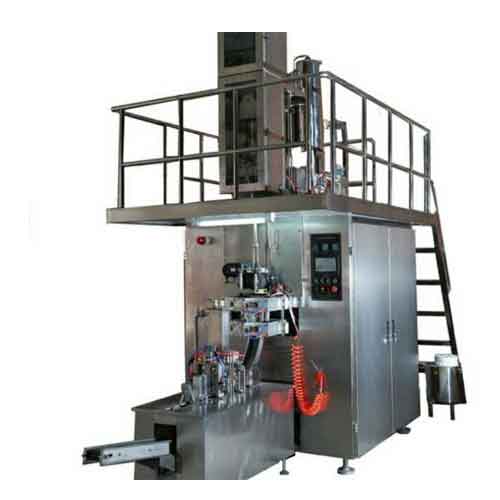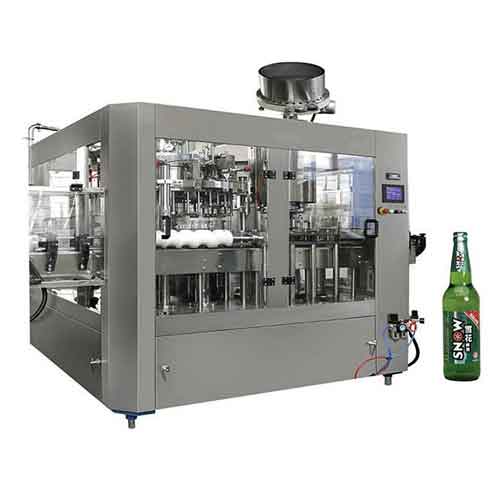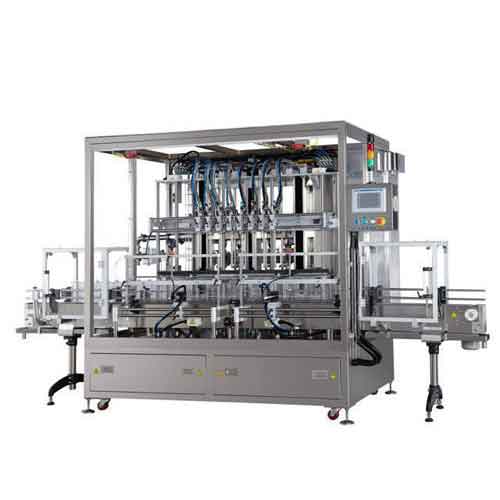
Table of Contents
· Introduction
· Factors Affecting the Cost
· Machine Specifications and Features
· Cost of Ownership and ROI
· Tips for Selecting a Filling Machine
· Conclusion
Introduction
Are you a beverage or dairy producer considering a 250ml brick aseptic carton filling machine for your production line? Investing in the right equipment can be daunting – especially when you’re not sure what to expect in terms of cost and value. I’ve been in your shoes before, and I know how confusing it can be to navigate the pricing of packaging machinery. Let me help simplify things for you.A new 250ml brick aseptic carton filling machine can cost anywhere from roughly $40,000 to $200,000, depending on its level of automation, speed, features, and packaging materials. However, high-speed fully automated sterile carton filling machines from world-leading brands may exceed $1 million.
In the sections below, I’ll break down what factors influence the price, what specifications you should look for, and how to evaluate the true cost of ownership and return on investment (ROI). I’ll share tips to help you choose the best option for your business.
Factors Affecting the Cost
What makes one filling machine cost so much more than another? There are several key factors that drive up or down the price of a 250ml brick carton filler. If you’re not careful, you might end up paying for features you don’t need – or worse, missing out on critical capabilities that could save you money in the long run. Let’s look at the main things that influence cost:· Automation Level: Fully automatic machines handle everything from erecting cartons to filling and sealing, which means higher upfront cost but lower labor requirements. Semi-automatic models require more manual intervention and are generally cheaper. For example, a basic semi-automatic 250ml filler might cost only a few thousand dollars, whereas a high-end fully automatic aseptic filler can cost several million dollars. The extra investment in automation often pays off in efficiency and consistency for larger operations.
· Production Speed (Capacity): Faster machines that can fill more cartons per hour typically cost more. A machine rated at 2,000 cartons/hour will be pricier than one that does 1,000 cartons/hour, because it needs more advanced engineering and components to achieve that throughput. Speed is a major factor in cost – a machine that can produce 5,000 cartons per hour might cost significantly more than a slower model . When evaluating cost, consider your required output: buying a faster machine than you need could waste money, but a machine that’s too slow could limit your growth.
· Machine Size and Complexity: Larger machines with more complex designs (multiple filling heads, advanced sterilization systems, etc.) will have a higher price tag. A compact tabletop filler is simpler and cheaper, while an industrial aseptic filler with a sterile chamber and CIP (clean-in-place) system is a huge, complex piece of equipment that costs a lot more. The size and complexity also affect installation and utility requirements – a bigger machine might need more floor space, power, and maintenance, which are indirect costs to consider.
· Material and Build Quality: Machines built with high-grade stainless steel, precision components, and from reputable manufacturers tend to cost more. These machines often offer better durability, hygiene, and reliability. Cheaper models might cut corners on materials or construction, which could lead to frequent breakdowns or shorter lifespan. It’s a classic trade-off: you can save money upfront with a lower-cost build, but you might pay in the form of repairs or downtime later. Investing in a well-built machine from a trusted brand can actually be more cost-effective over the long run.
· Brand and Manufacturer: Brand name carries weight in pricing. Established international brands are known for quality and support but come with a premium price. In contrast, newer or regional manufacturers (often in China) offer more budget-friendly options. For instance, a new high-speed aseptic filler from a top global brand could easily exceed $1,000,000, whereas a comparable Chinese-made machine might be in the $100,000–$200,000 range.
· Additional Features: Any special features or add-ons will add to the cost. Examples include an aseptic filling system (for long shelf-life products), integrated sterilization of packaging material, automatic cleaning-in-place, date coding or labeling units, and the ability to handle different carton sizes. A machine with aseptic capabilities and multiple size flexibility will cost more than a basic model that only does non-aseptic filling for a single size. Think about which features are essential for your product (e.g. do you need true aseptic packaging for UHT milk/juice, or is a simpler hygienic filler enough?). Prioritizing must-have features and skipping unnecessary ones can help control costs.
Understanding these factors will help you figure out why different machines have such varying prices. In the next section, we’ll dive into specific specifications and features of 250ml brick aseptic carton filling machines, so you know what to look for when comparing options.

Machine Specifications and Features
When shopping for a 250ml aseptic carton filling machine, it’s important to know the typical specifications and what features different models offer. You don’t want to end up with a machine that can’t meet your production needs or lacks critical functionality. Let’s go over the key specs and features you’ll encounter:· Filling Volume: Most machines are designed for a specific volume – in this case, 250ml. Some models can be adjusted or come with different filling heads to handle similar sizes like 200ml or 1L, but a 250ml brick carton filler will be optimized for that volume. Make sure the machine you choose is rated for exactly the carton size you plan to use.
· Production Capacity (Speed): This is usually given in cartons per hour (cph). Small machines might fill around 2,000–3,000 cartons per hour, while high-speed ones can do 5,000 cartons/hour or more. Always check the rated capacity and ensure it aligns with your production targets. Keep in mind that actual output can vary slightly based on product viscosity and machine efficiency.
· Machine Dimensions and Footprint: These machines can be quite large. A typical 250ml aseptic carton filler might measure around 3–4 meters in length, 1.5–2 meters in width, and over 3 meters in height . They also tend to weigh a ton or more (often 1,500–3,500 kg) . Before purchasing, consider whether your facility has enough space and the structural capacity to accommodate the machine. Smaller semi-automatic units will be more compact, but fully automatic aseptic fillers are essentially factory-floor equipment that require a dedicated area.
· Power Requirements: Filling machines usually run on electricity (and sometimes compressed air for pneumatic parts). A typical unit might require a 3-phase power supply (e.g. 380V, 50Hz) and have a power consumption in the range of 5–15 kW . Some models list around 8 kW power usage , while larger ones could be higher. Be sure to check the voltage and phase required, and ensure your plant can provide that. Compressed air consumption (if any) should also be noted for your utility planning.
· Automation and Control: Modern filling machines come with advanced control systems. Many use PLC (programmable logic controller) with a touch-screen interface for easy operation and adjustment. This allows operators to set parameters (like fill volume, speed) and monitor the machine’s status. Features such as automatic carton feeding, filling, and sealing are standard in fully automatic models. Some machines even have smart sensors to detect jams or missing cartons and will pause or alert the operator, minimizing product waste.
· Aseptic Capability: If you plan to package UHT-treated milk, juice, or other beverages that need a long shelf life without refrigeration, you’ll need an aseptic filling machine. Aseptic models include a sterile chamber and methods to sterilize the packaging material (often using hydrogen peroxide and UV light) . These machines maintain a sterile environment during filling so that the product remains shelf-stable for months. Aseptic fillers are more complex and expensive, but they are crucial for certain products. If you only need to package refrigerated or short-shelf-life products, a standard hygienic filler (non-aseptic) might suffice and will cost less.
· Material Compatibility: Brick carton fillers are designed for paperboard cartons (often multilayer paper-aluminum-plastic cartons). Verify that the machine is compatible with the type of carton material you will use. Most 250ml fillers use pre-formed carton sleeves or rolls of web that form the carton. Some machines can handle both standard and “slim” brick cartons . Also check if it requires any specific brand or type of carton – some proprietary systems only work with the manufacturer’s cartons, which could affect your supply chain and costs.
· Cleaning and Sanitation Features: Look for features that make cleaning and maintenance easier, as this will save you time and help maintain hygiene. Many machines have a CIP system that automatically cleans the product contact parts with cleaning solutions. Quick-release clamps and accessible components can reduce downtime during cleaning. A hygienic design (with smooth surfaces, no crevices) will prevent bacterial growth and make sanitation more effective. These features might increase the machine’s cost, but they are important for food safety and efficiency.
· Additional Options: Some models come with extras like automatic date coding or batch printing on the cartons, integrated label applicators for straws or seals, or the ability to run different carton sizes by changing parts. There are also machines that can be upgraded – for example, adding an aseptic module or increasing speed via a retrofit kit. Consider whether you need these options now or in the future, as they can influence which machine is the best fit.
By understanding these specifications, you can better compare different machines. Don’t just look at the price – make sure the machine’s capabilities match your production requirements. In the next section, we’ll discuss the cost of ownership and ROI, so you can see beyond the sticker price and evaluate the long-term value of a filling machine.
Cost of Ownership and ROI
Buying a filling machine is a significant investment, so it’s important to consider the total cost of ownership and the return on investment you’ll get. It’s not just about how much you pay upfront – you also need to factor in operating costs, maintenance, and how quickly the machine will pay for itself by increasing your production and sales. Let’s break this down:· Operating Costs: These include the day-to-day expenses of running the machine. Electricity is a big one – a machine consuming 8 kW for 8 hours a day will add to your utility bills . Some machines might use compressed air or steam for sterilization, which also has a cost. Consumables like packaging material (cartons), any sterilizing agents (e.g. hydrogen peroxide for aseptic machines), and cleaning chemicals should be considered. Also account for labor: a fully automatic machine might only need one operator to monitor it, whereas a semi-automatic one might need several people to feed cartons or handle output. Lower labor requirements can be a hidden ROI benefit of more automated (and often more expensive) machines.
· Maintenance and Repairs: All machinery requires maintenance – routine servicing, part replacements, and the occasional repair. High-quality machines may have lower maintenance needs and longer intervals between service, but they might have pricier parts. You should budget for regular maintenance (some manufacturers recommend professional service at least annually) and keep a stock of critical spare parts. Factor in the cost of spare parts and whether they are readily available. A machine from a local or well-established supplier might have cheaper, easier-to-get parts compared to an imported one. Downtime is another consideration: if the machine breaks down, how quickly can it be fixed and how much production will you lose? A more reliable machine might justify a higher price if it minimizes costly downtime.
· Lifespan and Durability: A filling machine is a long-term asset. A well-maintained machine can last for many years – in some cases, decades. When evaluating cost, think about the machine’s expected lifespan. For instance, an inexpensive machine that only lasts 5 years might end up costing more per year of use than a more expensive one that lasts 15 years. Industrial filling equipment is built to be robust; many manufacturers design their machines for a service life of 10+ years with proper care. Keep an eye out for build quality and reviews on durability when choosing a model.
· Throughput and ROI: The whole point of investing in a filling machine is to increase your production capacity and output, which in turn should increase your revenue. To calculate ROI, estimate how much additional product you can produce and sell with the new machine. For example, if a machine allows you to package 2,000 more cartons per day and each carton yields a profit of $0.10, that’s $200 extra profit per day. Divide the machine’s cost by the daily profit gain to see how quickly it pays back. (In this hypothetical case, a $40,000 machine would pay for itself in 200 days of full operation.) Of course, your actual numbers will vary, but this exercise helps justify the expense. Faster machines or those that enable new product lines (like aseptic packaging for export markets) can significantly boost ROI by opening up new sales opportunities.
· Energy Efficiency: Newer machines often come with energy-saving features – better insulation, efficient motors, etc. These can reduce operating costs over time. If two machines have similar performance, but one is more energy-efficient, the savings on electricity over a few years could be substantial. Some manufacturers advertise energy consumption figures; use those to compare. For instance, one machine might use 10% less power per carton filled than another. While energy efficiency might not be the top factor in your decision, it’s a nice bonus that improves long-term cost-effectiveness.
· Scalability and Flexibility: Consider how the machine fits into your future plans. If you expect to grow your production or introduce new products, a flexible machine that can handle higher volumes or different carton sizes might provide better ROI. It avoids the need to buy another machine later. On the other hand, if you buy a very high-capacity machine but only run it at half speed, you’re not getting the full benefit of its capability – you might have been better off with a smaller machine and lower cost. Aim for a machine that meets your needs now and has some headroom for growth, but don’t overspend on capacity you won’t use in the foreseeable future.
Calculating ROI isn’t just about money – it’s also about qualitative benefits like improved product quality (aseptic filling ensures product safety and longer shelf life), reduced product waste (accurate filling and sealing reduces spillage or spoiled product), and enhanced brand reputation (consistent, properly packaged products). These factors can indirectly contribute to your bottom line by keeping customers satisfied and reducing losses.
In summary, when evaluating a 250ml aseptic carton filling machine, look beyond the initial purchase price. Consider how much it will cost to run and maintain, how long it will serve you, and how much it will help your business grow. A slightly more expensive machine that is efficient, reliable, and meets your future needs could offer a much better return than a bargain model that constantly causes problems or limits your output. Next, let’s compare a few different machine models to see how they stack up in terms of cost and features.

Tips for Selecting a Filling Machine
Choosing the best 250ml brick aseptic carton filling machine for your needs can be a big decision. Here are some practical tips to guide you through the selection process, ensuring you make a choice that’s cost-effective and fits your production requirements:1. Assess Your Production Needs: Before looking at machines, clearly define your production volume (cartons per day or per hour) and the type of product you’ll be filling. If you’re a small producer making a few thousand cartons a day, a high-speed machine might be overkill and unnecessarily expensive. On the other hand, if you plan to scale up or have large orders, don’t bottleneck yourself with a machine that’s too slow. Match the machine’s capacity to your current needs with some buffer for growth.
2. Consider Product Requirements: Different products have different packaging needs. If you’re filling UHT milk or juice that needs a long shelf life, you must get an aseptic filling machine. For products like yogurt drinks or chilled juices that are kept refrigerated, a standard hygienic filler might be sufficient. Also think about product viscosity – most 250ml fillers handle water-like liquids to light viscous liquids; if you have a pulpy juice or something thicker, ensure the machine can handle it (some may require special filling valves or pumps). Knowing your product’s特性 will help you filter out machines that aren’t suitable.
3. Budget Wisely: Determine your budget range early on, but remember to consider the total cost of ownership, not just the purchase price. It’s okay to have a price target, but be flexible if a slightly pricier machine offers much better long-term value. Sometimes it’s worth stretching the budget for a more reliable or higher-capacity machine that will grow with your business. Conversely, don’t pay for features you truly don’t need – for example, don’t buy an aseptic machine if you only need to package fresh juice that’s sold locally and refrigerated. Focus your spending on the capabilities that are essential to your product and production goals.
4. Research Brands and Suppliers: Look into the reputation of the manufacturers or suppliers you’re considering. Read reviews, talk to other producers if possible, and see how long the company has been in business. Well-established brands (even if more expensive) often provide better technical support, training, and readily available parts. Newer or lesser-known brands might offer great prices, but verify that they have a track record of delivering working machines and standing by their products. If you’re considering a Chinese manufacturer (which many do for cost reasons), check if they have references or case studies of international clients. Also inquire about their after-sales service – do they provide installation assistance, training, and warranty? A good supplier will be responsive to your questions and can provide documentation like machine specifications, certifications (e.g., CE, FDA compliance), and perhaps even a demonstration or trial run.
5. Check for Compatibility and Support: Ensure that the machine you choose is compatible with the carton materials you plan to use. Some machines only work with specific carton brands or require proprietary packaging, which could limit your options and potentially increase material costs. It’s generally better to choose a machine that uses widely available cartons. Also, consider the support you’ll get: Will the supplier help with installation and commissioning? Do they offer training for your staff? What is the warranty period and what does it cover? How quickly can you get replacement parts and at what cost? These factors can greatly affect your experience with the machine. A slightly more expensive machine with excellent support might save you a lot of headaches (and downtime) compared to a cheaper one that leaves you on your own when something goes wrong.
6. Request Quotes and Compare: Don’t hesitate to reach out to multiple suppliers for quotes. Be clear about your requirements so they can propose the right model. When you get quotes, compare not just the price but also what’s included (e.g., installation, training, initial spare parts kit). Sometimes a quote might seem higher but includes valuable extras. Also, ask about financing or leasing options – some third parties offer financing plans which can make the investment more manageable by spreading out payments.
7. Think About the Future: Selecting a machine is not just for today – think about where you want your business to be in the next 5 years. If you anticipate producing new products or increasing volume, choose a machine that can adapt. For example, if you might want to package 1L cartons in the future, maybe invest in a machine that can be converted or has optional heads for different sizes (if that’s important, verify the conversion process and cost with the manufacturer). If sustainability is a focus, you might look for machines that support eco-friendly packaging materials or use less energy. Future-proofing your choice can save you from having to replace the machine sooner than necessary.
8. Trust Your Gut (and Do Due Diligence): Finally, after gathering all the information, trust your judgment. If a deal seems too good to be true, it might be – be wary of extremely low prices that don’t align with the machine’s specifications or the supplier’s credibility. On the other hand, if a supplier impresses you with their knowledge, willingness to customize or support, and you’ve done your due diligence checking their background, it’s a good sign. Don’t rush the decision; take the time to ask all your questions and perhaps visit a reference site or factory if possible. Making an informed choice now will ensure you’re happy with your machine for years to come.
By following these tips, you’ll be better equipped to navigate the market and find the best 250ml brick carton filling machine that offers the right balance of cost and functionality for your business.
Conclusion
Investing in a 250ml brick carton filling machine is a big step, but it doesn’t have to be overwhelming. In this article, we’ve covered the typical costs of these machines and the factors that influence pricing, from automation level and speed to brand and features. We looked at key specifications like capacity, size, and power requirements so you know what to expect from different models. We also discussed the importance of evaluating the total cost of ownership and calculating ROI – remember, the cheapest machine isn’t always the best value if it costs more in the long run or can’t meet your needs.I wish you the best in finding the perfect 250ml brick carton filling machine for your needs. Here’s to smoother production, happier customers, and a great return on your investment! If you have any further questions or need advice, feel free to reach out – I’m always happy to help a fellow producer make an informed decision.
Union Machinery has been engaged in food machinery customization services since its establishment in 2014, according to customer needs for you to tailor suitable machinery and equipment, for more product information, please refer to: Aseptic-Carton-filling-machine;More video information see view:200ml-aseptic-carton-filling-machine ; Our expertise and advantages will bring you more opportunities and development space.
For personalized, industry-tailored advice and to explore state-of-the-art solutions, please don't hesitate to contact us at info@unmachinery.com
The following is other knowledge related to aseptic carton filling production that I have summarized based on long-term work experience, for your reference. I hope it will be helpful to you.
1.What is the aseptic filling machine?
2.How to ensure the quality and safety of aseptic carton filling products?
3.What are the common forms of aseptic carton packaging?
4.What are the main equipment of aseptic carton filling line?
5.Aseptic carton filling common problems and solutions.
6.How to ensure the aseptic effect of aseptic carton filling?
7.What should be noted when buying a aseptic carton filling machine?
8.What are the benefits of using a sterile carton filling machine?
9.How can aseptic carton filling machines help enterprises improve production efficiency?
10.What is the maintenance cost of a aseptic carton filling machine?
11.How to judge the quality of aseptic carton filling machine?
12.How Can Aseptic Filling Revolutionize Your Ice Cream Production?
13.How to Maintain a Standard Brick Aseptic Carton Filler?







